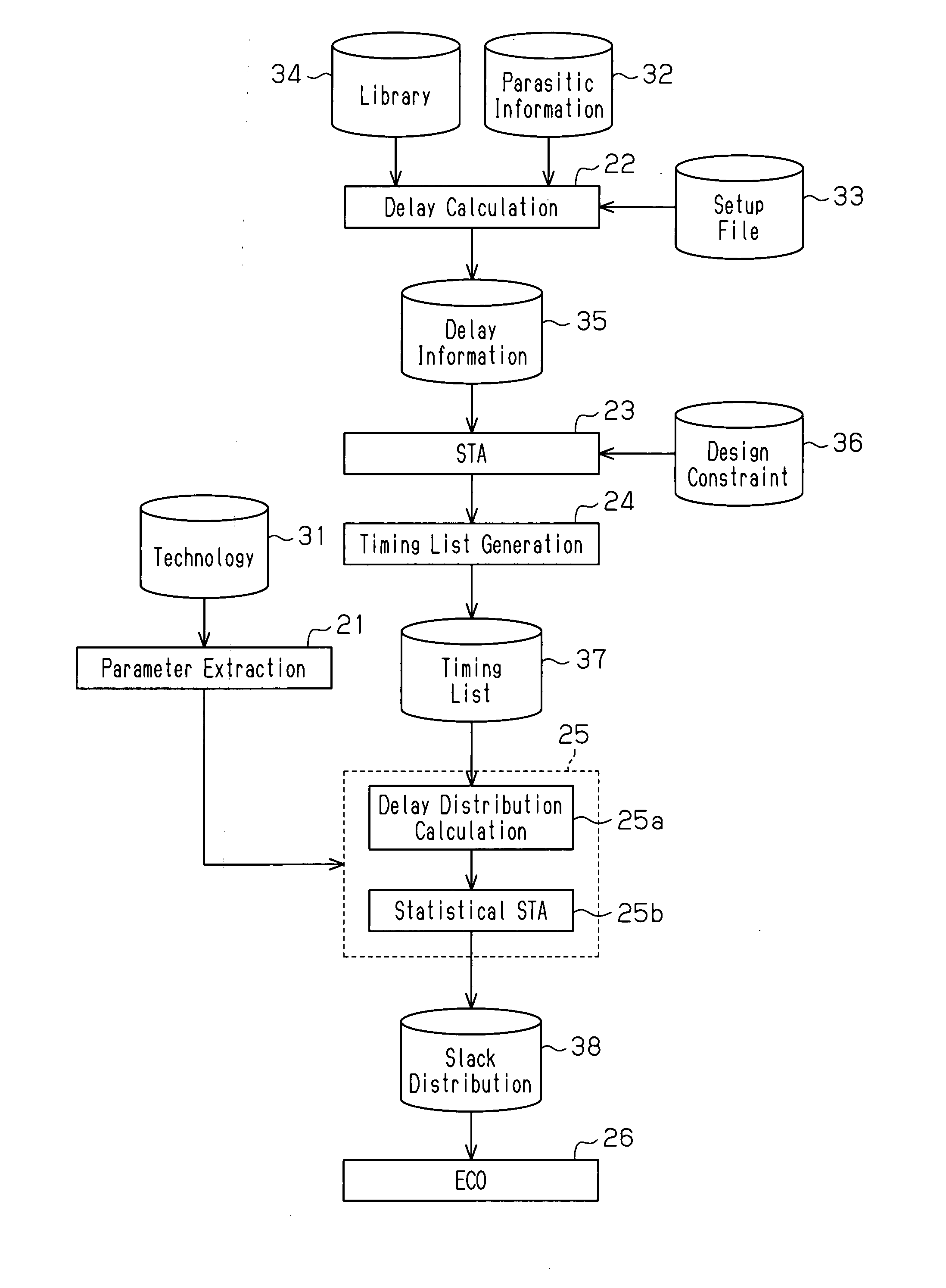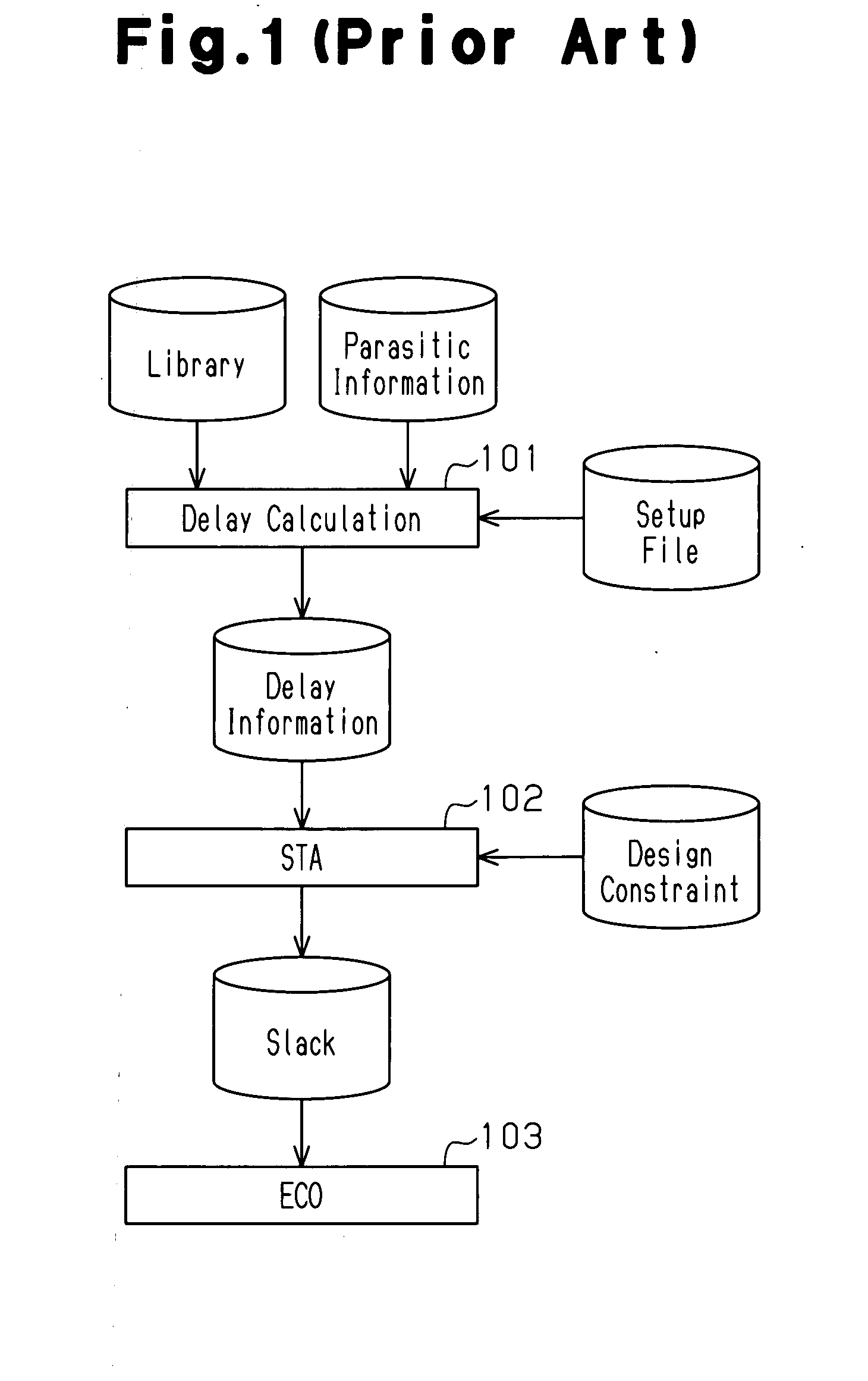Timing analysis method and device
a timing analysis and timing technology, applied in the field of semiconductor integrated circuits, can solve the problems of accumulating delay of instances (circuits including one or more logic circuits) forming paths, affecting the timing accuracy of timing analysis, and prolonging the period required for design and development. , to achieve the effect of improving timing convergence and reducing the amount of data
- Summary
- Abstract
- Description
- Claims
- Application Information
AI Technical Summary
Benefits of technology
Problems solved by technology
Method used
Image
Examples
first embodiment
[0034] A timing analysis method according to the present invention will now be discussed with reference to the drawings.
[0035]FIG. 2 is a flowchart illustrating timing analysis performed by a timing analysis device 11 shown in FIG. 5.
[0036] In step 21, the timing analysis device 11 simulates and analyzes delay time characteristics for each cell and each path based on a technology file 31. The timing analysis device 11 then generates a distribution parameter table using input slew rate and output load capacitance of each cell as parameters so that the table indicates distribution of the median values of delays and the delay variation amount (standard deviation) in accordance with these parameters. The technology file 31 contains system correction coefficients and variation characteristic values of delay time at the rising edge and falling edge of an output signal from each cell in a standard process. The system correction coefficients include a coefficient depending on the density o...
second embodiment
[0083] A timing analysis method according to the present invention will now be described with reference to the drawings.
[0084]FIG. 13 is a schematic flowchart showing a timing analysis process of the second embodiment. In the same manner as the first embodiment, the timing analysis process shown in FIG. 13 is performed by the timing analysis device 11 shown in FIG. 5.
[0085] Steps 201 to 204 of the timing analysis process in the second embodiment are identical to steps 21 to 24 of the timing analysis process in the first embodiment (refer to FIG. 2). Therefore, steps 201 to 204 will not be described in detail.
[0086] In a reanalysis process (step 205), the timing analysis device 11 reads the information of the timing list 37 generated in step 204.
[0087] The timing list 37 includes information of a path under relatively strict timing conditions. The path is a signal propagation path and includes path information and information of two points (start point and end point) defining the ...
PUM
 Login to View More
Login to View More Abstract
Description
Claims
Application Information
 Login to View More
Login to View More - R&D
- Intellectual Property
- Life Sciences
- Materials
- Tech Scout
- Unparalleled Data Quality
- Higher Quality Content
- 60% Fewer Hallucinations
Browse by: Latest US Patents, China's latest patents, Technical Efficacy Thesaurus, Application Domain, Technology Topic, Popular Technical Reports.
© 2025 PatSnap. All rights reserved.Legal|Privacy policy|Modern Slavery Act Transparency Statement|Sitemap|About US| Contact US: help@patsnap.com



